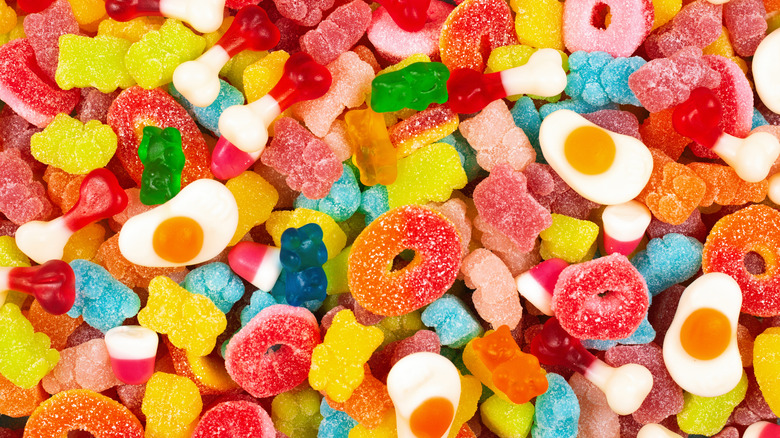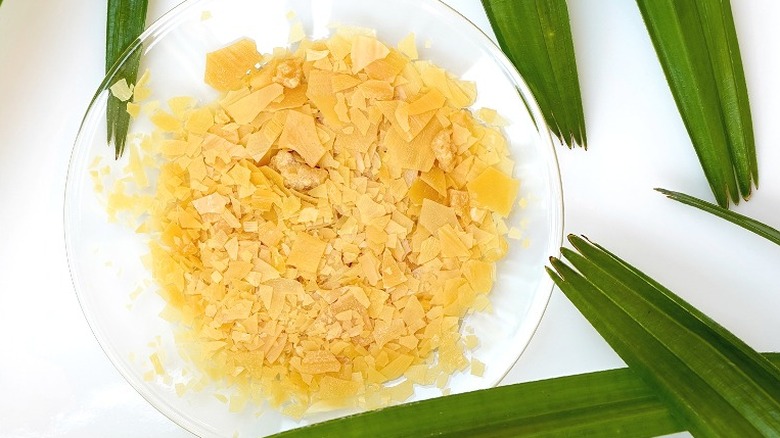The Real Reason There Is Carnauba Wax In Candy
It's easy to tell that many items in the produce aisle have a coating of wax to help preserve their freshness: Just draw a fingernail down the skin of a cucumber and you'll see the thin line carved into the wax. It's less widely known that wax is a common ingredient in many types of candy. Check the ingredients label of candies like gummy bears, M&M's, or fruit snacks and you'll see it: "Carnauba wax." According to The Takeout, carnauba wax is a natural, plant-based substance that's produced by a variety of palm tree found only in Brazil. The wax is sustainably harvested because the palm leaves can be taken without causing harm to the trees. The leaves are dried and pounded, then the wax is stripped away by a machine.
If you're turning up your nose at the idea of this substance in your favorite sweets, there's actually a good reason why it's used in candy. Carnauba wax creates an attractive, shiny coating and also prevents certain candies — like M&M's — from melting before they can be eaten. With gummy bears and other chewy treats, carnauba wax gives the candy structure and shape. This wax has uses in many industries, and one quality in particular that makes it appealing as a food additive.
Here's why it's often used instead of beeswax
Here's why carnauba wax is an appealing food additive: Carnauba wax is plant-derived and harvested without harming or exploiting animals or insects, therefore Vegan Friendly shares that the wax is considered a vegan food. They note that it's important to check products where carnauba wax is used for other ingredients that may not qualify as vegan, such as gelatin, which is another common candy ingredient. When purchased in its pure form, carnauba is safe to consume in a vegan diet. They also recommend looking for fair trade-sourced carnauba when possible to support the workers who harvest it.
Beyond candy, carnauba is used in a surprising number of other industries for different purposes. According to The Takeout, carnauba is used in medicine as a coating for pills. It gives structure to instant dessert toppings and to coat fruits and vegetables like those cucumbers we mentioned. Non-food uses for carnauba include cosmetics and candles. Carnauba wax can dry to a very hard finish, and because of this it's also used in polishes for flooring, cars, and boats. It's hard to believe that something used to shine linoleum can also be eaten as part of shiny, chewy candy, but that's what makes this natural, plant derived wax so unique.

